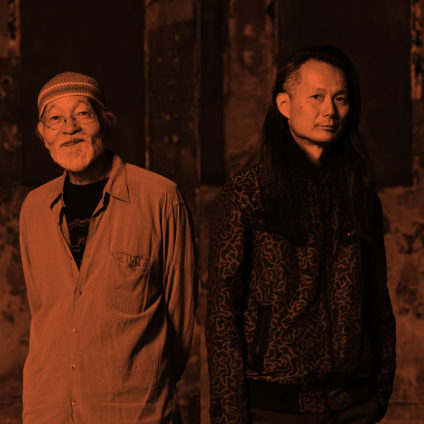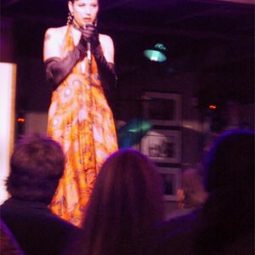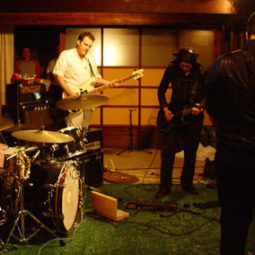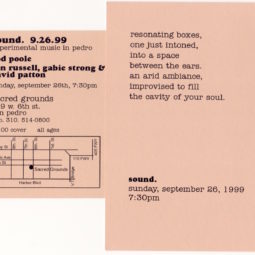Aki Onda (pictured on the left above) is a composer, performer, visual artist, and curator. Onda was born in Japan and currently resides in New York. He is particularly known for his “Cassette Memories” — works compiled from a “sound diary” of field-recordings collected by using the cassette Walkman over a span of last quarter-century. He creates compositions, performances, and visual artworks from those sound memories.
Onda often works in interdisciplinary fields and collaborates with filmmakers, visual artists, and choreographers. His on-going projects include “Nervous Magic Lantern” with Ken Jacobs, improvisation trio with Michael Snow and Alan Licht, visual-sound installation/performance with Raha Raissnia, and site-specific happening with Akio Suzuki.
Onda has performed at The Kitchen, MoMA, P.S.1 MOMA, ISSUE Project Room (New York), Time-Based Art Festival (Portland), Images Festival (Toronto), ICA (London), Louvre Museum, Palais de Tokyo, Fondation Cartier (Paris), Argos, Bozar, Wiels (Brussels), International Film Festival Rotterdam, Nam June Paik Art Center (Seoul), Sound Live Tokyo (Tokyo) and many others.
Onda is also active as a curator. He is a director of TPAM (Performing Arts Meeting in Yokohama) in Japan, and organized major performances and exhibitions throughout North America.
Akio Suzuki (pictured on the right above) is known as a pioneer of sound art, but the breadth of his activities and the form of his works far exceeds the normal boundaries of sound art. It is perhaps more as a “quester after sound and space” that he has received the most attention from artists in many fields. Suzuki’s journey as an artist began in 1963 with a performance at Nagoya station, in which he threw a bucket full of junk down a staircase. The inspiration behind this performance – the idea that if one were to hurl an object down a well-balanced stairway, a pleasant rhythm might be the result – took the desire to “listen” as its subject. That desire to hear, to listen has remained the one constant in Suzuki’s stance as an artist.
During the sixties, Suzuki’s sense of playfulness led him to undertake a series of Self-Study Events, where he explored the processes of “throwing” and “following”, taking the natural world as his collaborator. From the late seventies and through the eighties, Suzuki also developed a form of performance he refers to as Conceptual Soundwork. Applying a number of self-imposed, simple and austere rules, he uses objects close at hand in a mode of “intellectual play”. As sound art enjoyed a period of prosperity in the nineties, Suzuki was given the chance to create many installations, particularly in Berlin. Worthy of special note were his soundless installations, such as Otodate (Echo point, 1996) in Berlin, Enghien-les-Bains (since 1997, http://www.insitu-enghien.org/) and Strasbourg; Hana (Flower, 1997) at the Stadtgalarie Saarbrucken; and Pyramid (1999) which involved people excavating sounds.
In recent years, the insights he gained from the Turbridge (1999-2000) installation at the Daad Gallery in Berlin have opened up new avenues of development for his future work. By recording and creating sound sources himself, and by using electric amplification with Suzuki’s own self-designed output devices, he was able to reconstruct sounds and experiment with listening to the “factors of place”. Suzuki has started the Mogari series since 2002 at the Brunei Gallery at the School of Oriental & African Studies in London. This series centres around unbelievably powerful performances on iwabue – ancient and naturally-sculpted stone flutes which have been handed down in Suzuki’s family. Using these ancient instruments Suzuki sculpts time and place, and through their music he searches for his own end.



